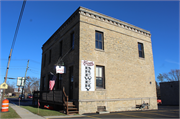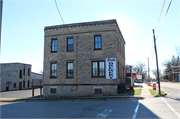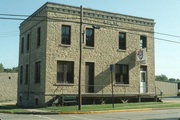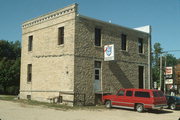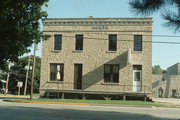Property Record
729-733 PARK AVE
Architecture and History Inventory
| Historic Name: | Kurth, John H. and Company Office Building |
|---|---|
| Other Name: | The Brewery Tavern |
| Contributing: | |
| Reference Number: | 3506 |
| Location (Address): | 729-733 PARK AVE |
|---|---|
| County: | Columbia |
| City: | Columbus |
| Township/Village: | |
| Unincorporated Community: | |
| Town: | |
| Range: | |
| Direction: | |
| Section: | |
| Quarter Section: | |
| Quarter/Quarter Section: |
| Year Built: | 1902 |
|---|---|
| Additions: | |
| Survey Date: | 19752018 |
| Historic Use: | brewery |
| Architectural Style: | Commercial Vernacular |
| Structural System: | |
| Wall Material: | Cream Brick |
| Architect: | |
| Other Buildings On Site: | |
| Demolished?: | No |
| Demolished Date: |
| National/State Register Listing Name: | Kurth, John H., and Company Office Building |
|---|---|
| National Register Listing Date: | 12/2/1993 |
| State Register Listing Date: | 1/22/1998 |
| National Register Multiple Property Name: |
| Additional Information: | A 'site file' exists for this property. It contains additional information such as correspondence, newspaper clippings, or historical information. It is a public record and may be viewed in person at the Wisconsin Historical Society, Division of Historic Preservation-Public History. This property is a locally designated landmark. In 1870, the Kurth Brewery was the largest of three breweries in Columbus, and was known as “John H. Kurth & Co.” The company owned two ice houses, a grain elevator near the depot, beer distribution warehouses in Tomah, Portage, and Luxemburg, three saloons in Columbus, and at least seventeen others in south-central Wisconsin. John Henry took over operations in 1880 from his father, Henry John, and soon after another son, Christian, joined the business. By 1900, the brewery complex took up the front of the entire block with a bottling department across the street. Founded by immigrants from Hesse-Kassel in central Germany, the company produced one hundred barrels of its “creamy, dreamy” beer each day by 1914. It also began marketing malted barley as a sideline, and soon its malting operation ranked among the country’s largest, making it a leading consumer of Wisconsin's barley crop. On Juny 20, 1916, the elevator and malt house were destroyed by fire. During the Prohibition, the company converted its operations to the production of soda pop. But after the repeal of Prohibition in 1933, mass-marketed beers began to dominate the industry, weakening small local breweries. In 1949, the Kurths brewed their last barrel of beer. Only the office building and beer cellar remain from the original brewery complex, which once included a grain elevator, a malthouse, two icehouses, an electric plant, a cooperage, a bottling plant, and warehouses. The surviving utilitarian office building, constructed of yellow quarry-faced limestone, features flat stone lintels and a heavy stone cornice supported by a row of classical modillions. Along the neoclassical parapet, a remnant of the original sign spells out "Kurth" in metal letters. Inside, the taproom looks exactly as it did when it opened in 1903. The cherry and oak bar is trimmed with classical molding and pilasters. At the oak backbar, fluted Doric columns, a heavy entablature, and a shallow cabinet frame a three-part mirror. Oak wainscoting along the walls, a large oak ice box, original light fixtures, and historic signs complete the period setting. Today, the Kurth family operates the building as a part-time tavern. |
|---|---|
| Bibliographic References: | Date of construction: NR nomination. COLUMBUS HISTORIC ARCHITECTURE TOURS, COLUMBUS HIATORIC LANDMARKS AND PRESERVATION COMMISSION, 1994. Take a Walk on Main Street: Historic Walking Tours in Wisconsin's Main Street Communities, Wisconsin Main Street Program, 1998. Columbus Historic Architecture Tours, undated. |
| Wisconsin Architecture and History Inventory, State Historic Preservation Office, Wisconsin Historical Society, Madison, Wisconsin |

